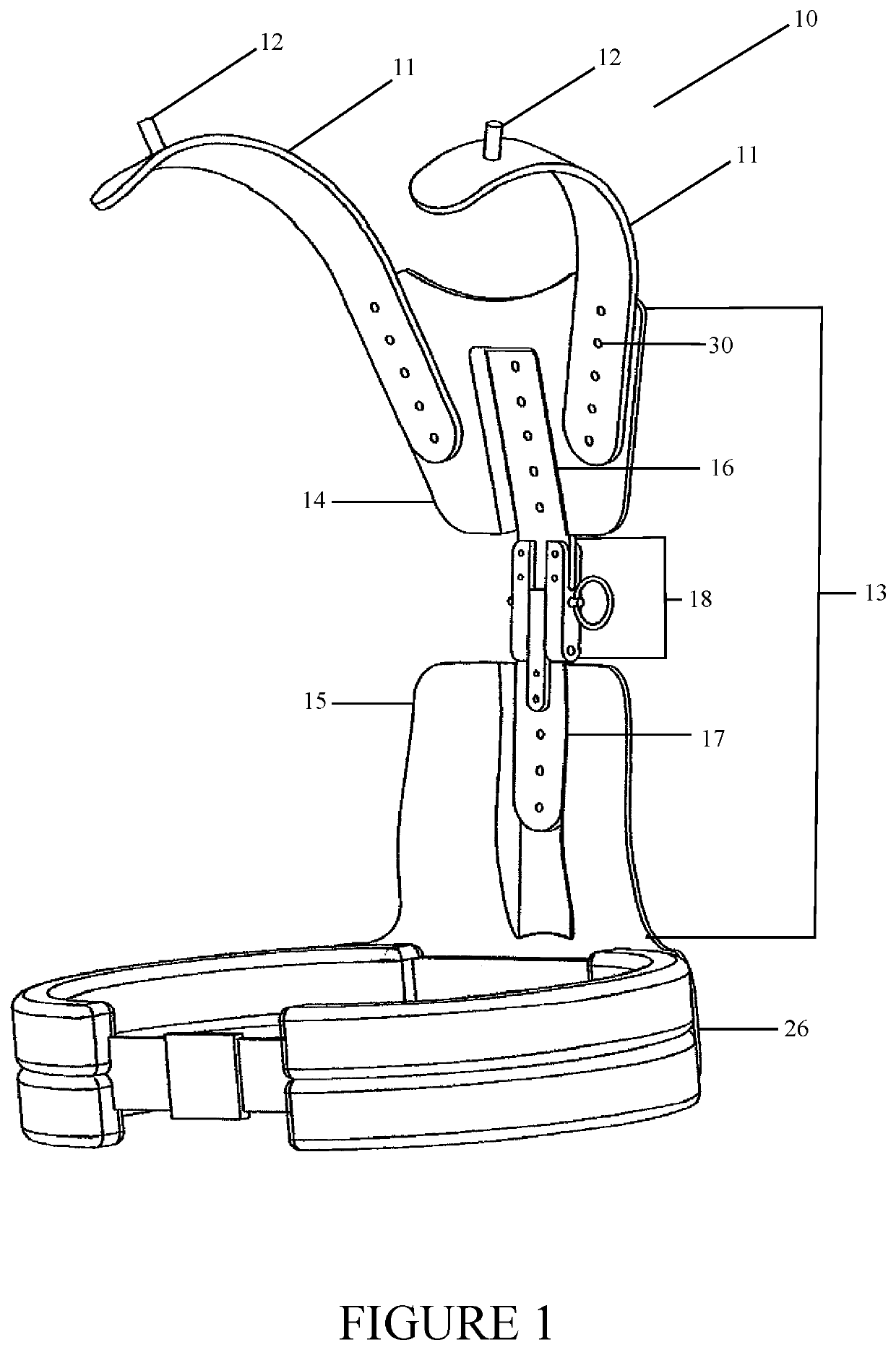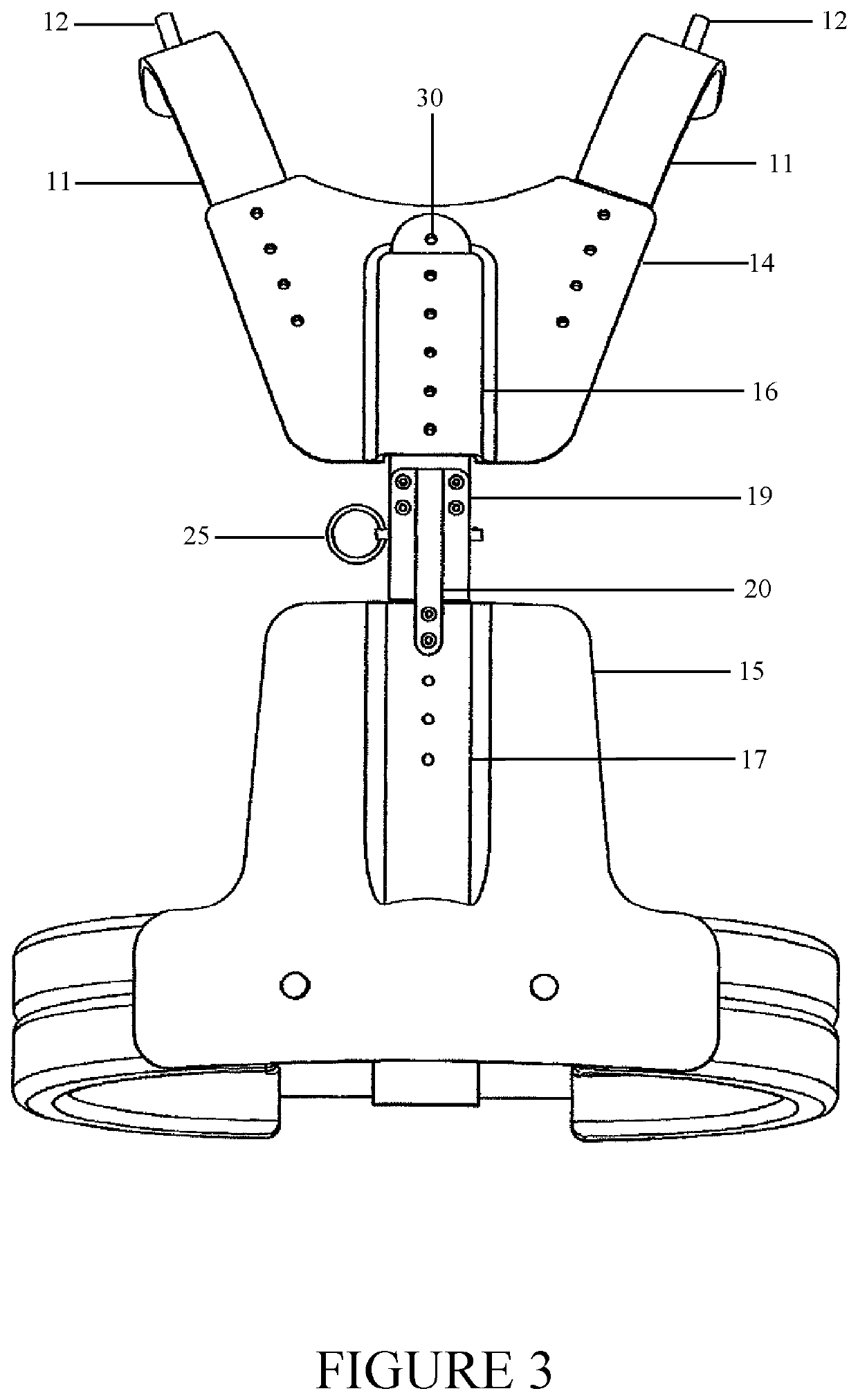Shoulder transfer weight support
a shoulder and support technology, applied in the field of medical devices, can solve the problems of limiting workers' comfort while working, and achieve the effects of reducing pressure on the cervical spine, reducing contact and stress, and reducing weight and pressur
- Summary
- Abstract
- Description
- Claims
- Application Information
AI Technical Summary
Benefits of technology
Problems solved by technology
Method used
Image
Examples
Embodiment Construction
[0026]Referring now to the invention in more detail, FIG. 1 shows a perspective view of the device, generally 10, in an “unfolded” or “open” state. The device or frame includes two shoulder extensions 11 that are elongated, rigid bars that are shaped such that, when attached to the device 10, they are positioned to extend up and over a wearer's shoulders. In preferred embodiments and the anticipated best mode of the device 10, the shoulder extensions 11 feature pins 12 protruding from an upper surface of the shoulder extensions 11, away for the wearer. As previously discussed, these pins can be used to support other equipment, including a face shield. In addition, the shoulder extensions 11 are attached to a back support, generally 13. The back support 13 is generally made of one or more back plates. In the embodiment shown in the drawings, the back support consists of an upper back plate 14, a lower back plate 15, an upper attachment bar 16, a lower attachment bar 17 and a hinge 18...
PUM
 Login to View More
Login to View More Abstract
Description
Claims
Application Information
 Login to View More
Login to View More - R&D
- Intellectual Property
- Life Sciences
- Materials
- Tech Scout
- Unparalleled Data Quality
- Higher Quality Content
- 60% Fewer Hallucinations
Browse by: Latest US Patents, China's latest patents, Technical Efficacy Thesaurus, Application Domain, Technology Topic, Popular Technical Reports.
© 2025 PatSnap. All rights reserved.Legal|Privacy policy|Modern Slavery Act Transparency Statement|Sitemap|About US| Contact US: help@patsnap.com



